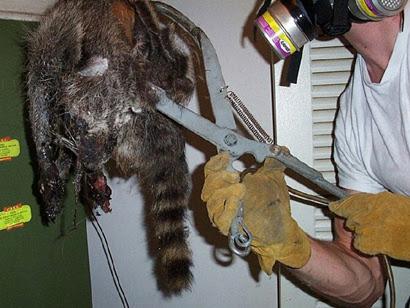Notifications

7 minutes, 34 seconds
-247 Views 0 Comments 0 Likes 0 Reviews

Richmond Hill is known for its peaceful neighborhoods and green spaces—but those same environments often attract unwanted wildlife into homes and businesses. From raccoons in attics to birds in vents and skunks under decks, urban wildlife is a growing concern.
Wildlife intrusions can:
Damage insulation, siding, vents, and wires
Leave behind waste that poses health risks
Disturb residents with noise and odor
Carry diseases such as rabies, leptospirosis, or parasites
Cause potential fire hazards by chewing electrical wiring
Ignoring wildlife problems can lead to structural damage, higher repair costs, and even personal health risks.
One of the more complex intruders in Richmond Hill is the bat. While they play an important ecological role by controlling insect populations, bats become a serious problem when they take up residence in your attic, chimney, or walls.
Bat removal Richmond Hill services are essential because:
Bats are protected by law in Ontario; removal must follow strict legal and seasonal guidelines
Their droppings (guano) can cause respiratory issues and contaminate insulation
DIY removal can lead to injury, property damage, or legal violations
Bats are nocturnal, making them harder to detect until an infestation is advanced
Professional bat removal includes a full inspection, sealing of all entry points (except one-way exits), and humane exclusion methods that let bats leave but prevent them from returning. It's critical to rely on trained wildlife control technicians who understand bat behavior, local regulations, and health safety standards.
Wildlife removal is not just about getting animals out—it's about doing it safely, ethically, and permanently. This is where animal removal control becomes vital. A certified team uses methods that are humane and preventative rather than reactive.
Services include:
Live trapping: Catch and relocate animals like raccoons, opossums, or skunks
Exclusion techniques: Install one-way doors or screens to let animals out without letting them back in
Sanitation and cleanup: Remove droppings, nesting materials, and contaminated insulation
Structural sealing: Block future access with wire mesh, caulking, or barriers
Ongoing monitoring: Ensure animals haven’t returned and the environment remains secure
Each species requires specific handling techniques. A skunk, for example, demands gentle trapping due to its spray reflex, while raccoons may return if exclusion is incomplete.
Homes and commercial buildings in Richmond Hill are vulnerable to a variety of wild animals, including:
Raccoons: Infamous for tearing into attics and roofs
Squirrels: Often chew wires and create nests in soffits or eaves
Birds: Nest in vents and chimneys, blocking airflow
Bats: Quietly roost in attics or wall cavities
Skunks: Burrow under porches, sheds, or decks
Opossums: Seek shelter in basements, crawl spaces, or garages
Mice and rats: Enter through tiny cracks, causing damage and contamination
If you notice strange noises at night, droppings, odors, or visible entry points, you may already have an infestation.
While it might be tempting to handle the problem yourself, most DIY methods are ineffective and risky:
Legal issues: Certain species like bats and birds are protected
Health hazards: Handling animals or their waste exposes you to serious diseases
Improper sealing: If you seal entry points with animals still inside, they may die in your walls
Ineffective traps: Inexperienced trapping can lead to escapes, injuries, or re-entry
Only licensed professionals understand the proper removal procedures, health protocols, and legal boundaries for each situation.
Animal intrusions don’t just affect homes—many businesses in Richmond Hill also experience issues, especially restaurants, storage facilities, and office buildings.
Wildlife in commercial properties can:
Damage stock, wiring, and insulation
Create unsanitary conditions
Affect your brand and reputation
Lead to health code violations
Commercial wildlife services are tailored to your industry’s needs with discreet service, flexible scheduling, and ongoing maintenance plans.
Ethical wildlife removal prioritizes the well-being of both the homeowner and the animals. Humane practices involve:
No poisons or glue traps
Safe relocation of healthy animals
Compliance with Ontario’s wildlife protection laws
Seasonal awareness (e.g., avoiding removal during baby season unless necessary)
Respect for natural wildlife behavior and habitat
This compassionate and lawful approach helps maintain the ecosystem while still protecting your property.
Here’s what to expect from a licensed wildlife removal service:
Inspection: Identify what animals are present, where they’ve entered, and how severe the damage is
Removal Plan: Choose appropriate traps or exclusion methods based on the species
Execution: Humanely remove or allow animals to exit
Sanitization: Clean up droppings, nests, and any biohazards
Prevention: Seal entry points and advise on landscaping or storage practices to discourage return
Follow-Up: Confirm removal and inspect for signs of reentry
Professionals may also install chimney caps, vent covers, or fencing for added prevention.
Whether you're dealing with bats in the attic or raccoons on the roof, effective and humane wildlife removal is a necessity—not a luxury. Professional animal removal control and bat removal Richmond Hill services ensure your home or business is safe, legal, and protected against future intrusions.
When you're ready to restore comfort and peace of mind, turn to Kia Pest Control. Their certified team offers fast, affordable, and fully humane wildlife solutions tailored to your specific needs. Contact them today to schedule your inspection.

